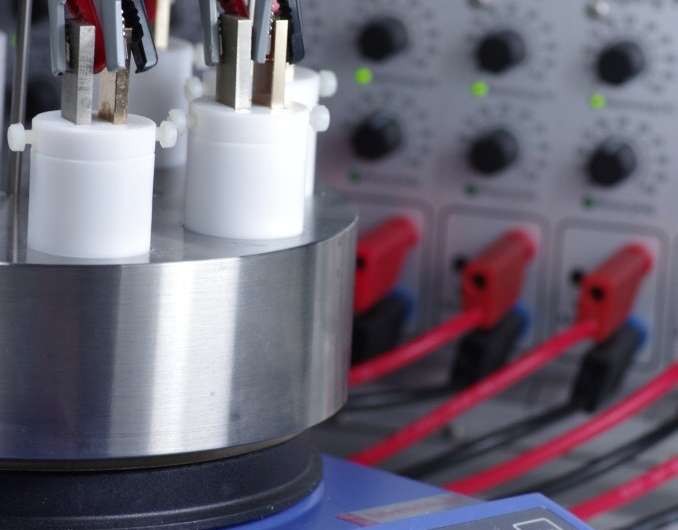New electro-organic synthesis allows sustainable and green production of fine chemicals

In the cooperative EPSYLON research project funded by the German Federal Ministry of Education and Research, scientists from Johannes Gutenberg University Mainz (JGU) and Evonik Performance Materials GmbH have developed a state-of-the-art and innovative electro-organic synthesis method.
The results of their research, presented in last week's issue of Science Advances, allow the use of electrosynthesis as a sustainable green chemistry for technical applications. The method allows the operator to react flexibly to the available supply of electricity. Moreover, the operator no longer has to rely on customized electrolysis apparatuses and can use a range of equipment.
The method was developed more than 160 years ago by German chemist Hermann Kolbe. Although electrochemical synthesis methods are used in the chemical industry, this has so far been a niche technology. One reason is that electrolysis conditions must be very finely controlled and uniform current input is essential. Due to the sophisticated technical infrastructure required, the option of electrosynthesis remained out of reach to most chemists. Today, the green potential of electrochemistry has been rediscovered. It makes sustainable and eco-friendly chemistry possible with very simple means, particularly with the use of surplus power from renewable sources such as wind or solar energy.
Electrochemistry is a versatile and powerful method to produce chemical compounds or to effect chemical changes in molecules. To put it simply, electrons replace costly and toxic reagents. Unnecessary waste can be avoided and the reaction can be halted at any time by simply switching off the power. Another advantage over classical synthesis is that many individual steps are more easily implemented by electrochemistry. In some cases, this can shorten synthesis by several steps. However, electrolyses often require a narrow current-density window and long reaction times. In addition, selectivity and scalability are more difficult or even impossible.

The key to the success of the research group at Johannes Gutenberg University Mainz is the use of a unique electrolyte system. The electrolyses here have extremely high stability to variation in current density, allowing operation in a current-density window with a width extending over more than two orders of magnitude, with no loss of productivity or selectivity. If the supply of current permits, the electrolysis may be carried out in a short time with very high current density.
More information: "Unexpected high robustness of electrochemical cross-coupling for a broad range of current density" Science Advances (2017). advances.sciencemag.org/content/3/10/eaao3920
Journal information: Science Advances
Provided by Universitaet Mainz



















